3.4 Structure of the Brain
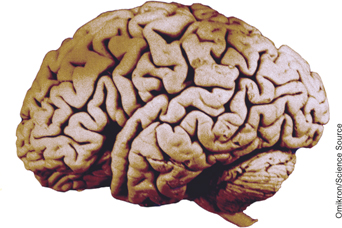
Right now, your neurons and glial cells are busy humming away, giving you potentially brilliant ideas, consciousness, and feelings. But which neurons in which parts of the brain control which functions? To answer that question, neuroscientists had to find a way of describing the brain. It can be helpful to talk about areas of the brain from “bottom to top,” noting how the different regions are specialized for different kinds of tasks. In general, simpler functions are performed at the “lower levels” of the brain, whereas more complex functions are performed at successively “higher” levels (see FIGURE 3.11). The brain can also be approached in a “side-

Let’s look first at the divisions of the brain and the responsibilities of each part, moving from the bottom to the top. Using this view, we can divide the brain into three parts: the hindbrain, the midbrain, and the fore-
69
The Hindbrain
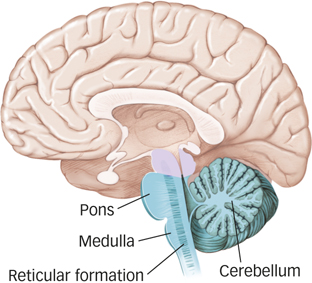
If you follow the spinal cord from your tailbone to where it enters your skull, you’ll find it difficult to determine where your spinal cord ends and your brain begins. That’s because the spinal cord is continuous with the hindbrain, an area of the brain that coordinates information coming into and out of the spinal cord. The hindbrain looks like a stalk on which the rest of the brain sits, and it controls the most basic functions of life: respiration, alertness, and motor skills. The structures that make up the hindbrain include the medulla, the reticular formation, the cerebellum, and the pons (see FIGURE 3.12).
hindbrain
An area of the brain that coordinates information coming into and out of the spinal cord.

Which part of the brain helps to orchestrate movements that keep you steady on your bike?
The medulla is an extension of the spinal cord into the skull that coordinates heart rate, circulation, and respiration. Beginning inside the medulla and extending upward is a small cluster of neurons called the reticular formation, which regulates sleep, wakefulness, and levels of arousal. In one early experiment, researchers stimulated the reticular formation of a sleeping cat. This caused the animal to awaken almost instantaneously and remain alert. Conversely, severing the connections between the reticular formation and the rest of the brain caused the animal to lapse into an irreversible coma (Moruzzi & Magoun, 1949). The reticular formation maintains the same delicate balance between alertness and unconsciousness in humans. In fact, many general anesthetics work by reducing activity in the reticular formation, rendering the patient unconscious.
medulla
An extension of the spinal cord into the skull that coordinates heart rate, circulation, and respiration.
reticular formation
A brain structure that regulates sleep, wakefulness, and levels of arousal.
Behind the medulla is the cerebellum, a large structure of the hindbrain that controls fine motor skills. (Cerebellum is Latin for “little brain,” and the structure does look like a small replica of the brain.) The cerebellum orchestrates the proper sequence of movements when we ride a bike, play the piano, or maintain balance while walking and running. It contributes to the fine-
cerebellum
A large structure of the hindbrain that controls fine motor skills.
The last major area of the hindbrain is the pons, a structure that relays information from the cerebellum to the rest of the brain. (Pons means “bridge” in Latin.) Although the detailed functions of the pons remain poorly understood, it essentially acts as a relay station or bridge between the cerebellum and other structures in the brain.
pons
A brain structure that relays information from the cerebellum to the rest of the brain.
The Midbrain
Sitting on top of the hindbrain is the midbrain, which is relatively small in humans. As you can see in FIGURE 3.13, the midbrain contains two main structures: the tectum and the tegmentum. These structures help orient an organism in the environment, and they guide movement towards or away from stimuli. For example, when you’re studying in a quiet room and you hear a click behind and to the right of you, your body will swivel and orient to the direction of the sound; this is your tectum in action.
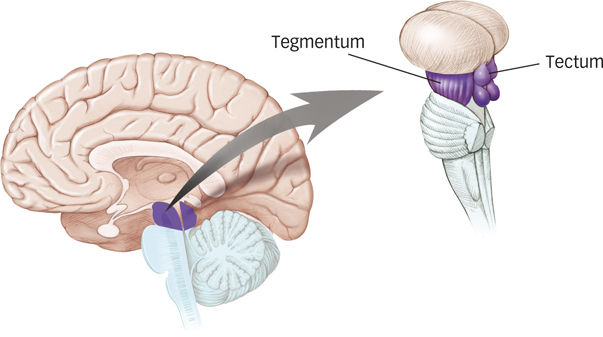
The midbrain may be relatively small, but it’s important. In fact, you could survive if you had only a hindbrain and a midbrain. The structures in the hindbrain would take care of all the bodily functions necessary to sustain life, and the structures in the midbrain would orient you toward or away from pleasurable or threatening stimuli in the environment. But this wouldn’t be much of a life. To understand where the abilities that make us fully human come from, we need to consider the last division of the brain.
70
The Forebrain
When you appreciate the beauty of a poem, plan to go skiing next winter, or notice the faint glimmer of sadness on a loved one’s face, you are enlisting the forebrain. The forebrain is the highest level of the brain—
Subcortical Structures
The subcortical structures are areas of the forebrain housed under the cerebral cortex near the center of the brain (see FIGURE 3.14). They include the thalamus, hypothalamus, pituitary gland, hippocampus, amygdala, and basal ganglia, and these structures play an important role in relaying information throughout the brain, as well as performing specific tasks that allow us to think, feel, and behave as humans. If you imagine sticking an index finger in each of your ears and pushing inward until they touch, that’s about where you’d find the subcortical structures (see FIGURE 3.14). Let’s take a quick look at each.
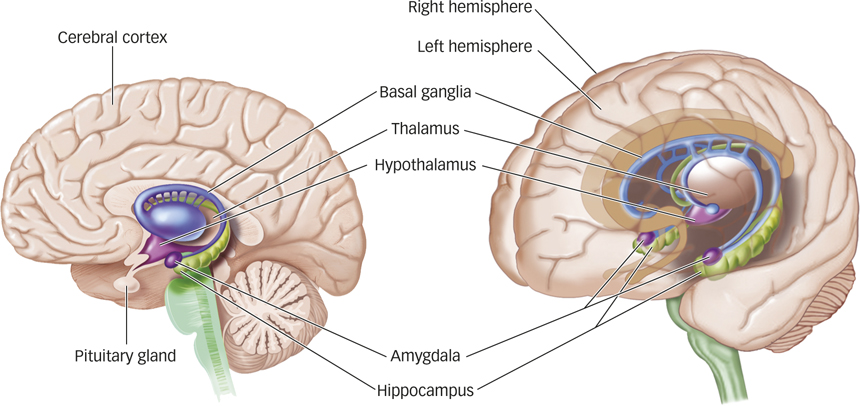
subcortical structures
Areas of the forebrain housed under the cerebral cortex near the very center of the brain.
71
The thalamus relays and filters information from the senses and transmits the information to the cerebral cortex. The thalamus receives inputs from all the major senses except smell, and it acts as a kind of computer server in a networked system, taking in multiple inputs and relaying them to a variety of locations (Guillery & Sherman, 2002). However, unlike the mechanical operations of a computer (“send input A to location B”), the thalamus actively filters sensory information, giving more weight to some inputs and less weight to others. The thalamus also closes the pathways of incoming sensations during sleep, providing a valuable function in not allowing information to pass to the rest of the brain.
thalamus
A subcortical structure that relays and filters information from the senses and transmits the information to the cerebral cortex.
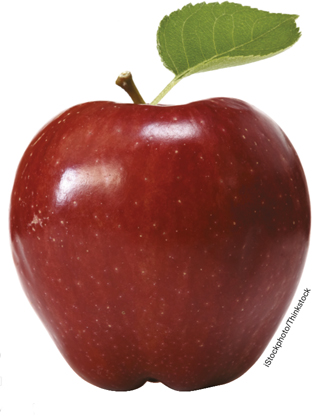
How is the thalamus like a computer?
The hypothalamus, located below the thalamus (hypo- is Greek for “under”), regulates body temperature, hunger, thirst, and sexual behavior. For example, lesions to some areas of the hypothalamus result in overeating, whereas lesions to other areas leave an animal with no desire for food at all (Berthoud & Morrison, 2008).
hypothalamus
A subcortical structure that regulates body temperature, hunger, thirst, and sexual behavior.
Located below the hypothalamus is the pituitary gland, the “master gland” of the body’s hormone-
pituitary gland
The “master gland” of the body’s hormone-
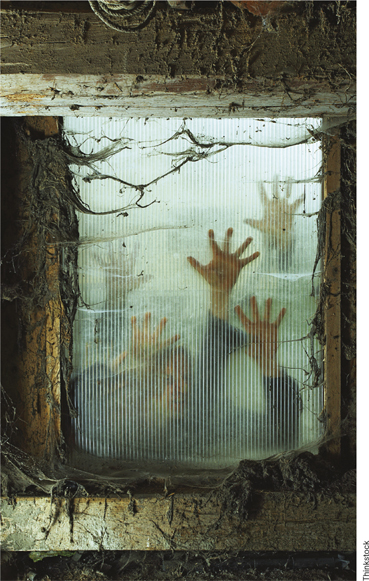
The hippocampus (from Latin for “sea horse,” due to its shape) is critical for creating new memories and integrating them into a network of knowledge so that they can be stored indefinitely in other parts of the cerebral cortex. Individuals with damage to the hippocampus can acquire new information and keep it in awareness for a few seconds, but as soon as they are distracted, they forget the information and the experience that produced it (Scoville & Milner, 1957; Squire, 2009). This kind of disruption is limited to everyday memory for facts and events that we can bring to consciousness; memory of learned habitual routines or emotional reactions remains intact (Squire, Knowlton, & Musen, 1993). As an example, people with damage to the hippocampus can remember how to drive and talk, but they cannot recall where they have recently driven or a conversation they have just had.
hippocampus
A structure critical for creating new memories and integrating them into a network of knowledge so that they can be stored indefinitely in other parts of the cerebral cortex.
The amygdala (from Latin for “almond,” also due to its shape), located at the tip of each horn of the hippocampus, plays a central role in many emotional processes, particularly the formation of emotional memories (Aggleton, 1992). When we are in emotionally arousing situations, the amygdala stimulates the hippocampus to remember many details surrounding the situation (Kensinger & Schacter, 2005). For example, people who lived through the terrorist attacks of September 11, 2001, remember vivid details about where they were, what they were doing, and how they felt when they heard the news, even years later (Hirst et al., 2009).
amygdala
A part of the limbic system that plays a central role in many emotional processes, particularly the formation of emotional memories.
Why are you likely to remember details of a traumatic event?
72
There are several other structures in the subcortical area, but we’ll consider just one more. The basal ganglia are a set of subcortical structures that directs intentional movements. The basal ganglia receive input from the cerebral cortex and send outputs to the motor centers in the brain stem. One part of the basal ganglia, the striatum, is involved in the control of posture and movement. People who suffer from Parkinson’s disease typically show symptoms of uncontrollable shaking and sudden jerks of the limbs and are unable to initiate a sequence of movements to achieve a specific goal. This happens because the dopamine-
basal ganglia
A set of subcortical structures that directs intentional movements.
The Cerebral Cortex
Our tour of the brain has taken us from the very small (neurons) to the somewhat bigger (major divisions of the brain) to the very large: the cerebral cortex, which is the outermost layer of the brain, visible to the naked eye, and divided into two hemispheres. The cortex is the highest level of the brain, and it is responsible for the most complex aspects of perception, emotion, movement, and thought (Fuster, 2003). It sits over the rest of the brain, like a mushroom cap shielding the underside and stem, and it is the wrinkled surface you see when looking at the brain with the naked eye. The cerebral cortex occupies roughly the area of a newspaper page. Fitting that much cortex into a human skull is a tough task. But if you crumple a sheet of newspaper, you’ll see that the same surface area now fits compactly into a much smaller space. The cortex, with its wrinkles and folds, holds a lot of brainpower in a relatively small package that fits comfortably inside the human skull (see FIGURE 3.15). The cerebral cortex can be best understood by studying its functions according to three levels of its organization: 1) across its two hemispheres; 2) within each hemisphere; and 3) within the specific cortical areas.
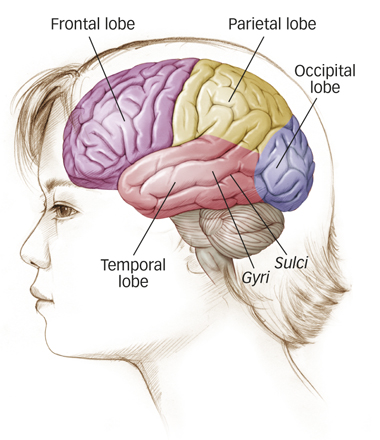
cerebral cortex
The outermost layer of the brain, visible to the naked eye and divided into two hemispheres.
1. Organization across Hemispheres. The first level of organization divides the cortex into the left and right hemispheres. The two hemispheres are more or less symmetrical in their appearance and, to some extent, in their functions. However, each hemisphere controls the functions of the opposite side of the body. This is called contralateral control, meaning that your right cerebral hemisphere perceives stimuli from and controls movements on the left side of your body, whereas your left cerebral hemisphere perceives stimuli from and controls movement on the right side of your body.
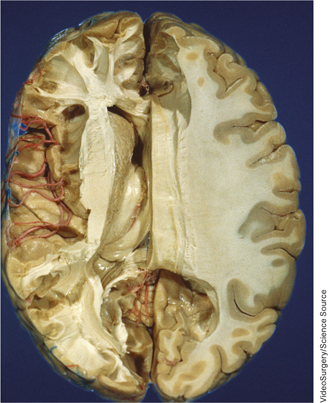
The cerebral hemispheres are connected to each other by bundles of axons that make possible communication between parallel areas of the cortex in each half. The largest of these bundles is the corpus callosum, which connects large areas of the cerebral cortex on each side of the brain and supports communication of information across the hemispheres (see FIGURE 3.16). This means that information received in the right hemisphere, for example, can pass across the corpus callosum to the left hemisphere.
Why is the part of the somatosensory cortex relating to the lips bigger than the area corresponding to the feet?

corpus callosum
A thick band of nerve fibers that connects large areas of the cerebral cortex on each side of the brain and supports communication of information across the hemispheres.
73
2. Organization within Hemispheres. The second level of organization in the cerebral cortex distinguishes the functions of the different regions within each hemisphere of the brain. Each hemisphere of the cerebral cortex is divided into four areas, or lobes: From back to front, these are the occipital lobe, the parietal lobe, the temporal lobe, and the frontal lobe, as shown in FIGURE 3.15.
The occipital lobe, located at the back of the cerebral cortex, processes visual information. Sensory receptors in the eyes send information to the thalamus, which in turn sends information to the primary areas of the occipital lobe, where simple features of the stimulus are extracted, such as the location and orientation of an object’s edges (see the Sensation and Perception chapter for more details). These features are then processed still further, leading to comprehension of what’s being seen. Damage to the primary visual areas of the occipital lobe can leave a person with partial or complete blindness. Information still enters the eyes, but without the ability to process and make sense of the information in the cerebral cortex, the information is as good as lost (Zeki, 2001).
occipital lobe
A region of the cerebral cortex that processes visual information.
The parietal lobe, located in front of the occipital lobe, carries out functions that include processing information about touch. The parietal lobe contains the somatosensory cortex, a strip of brain tissue running from the top of the brain down to the sides (see FIGURE 3.17). Within each hemisphere, the somatosensory cortex represents the skin areas on the contralateral surface of the body. Each part of the somatosensory cortex maps onto a particular part of the body. If a body area is more sensitive, a larger part of the somatosensory cortex is devoted to it. For example, the part of the somatosensory cortex that corresponds to the lips and tongue is larger than the area corresponding to the feet. The somatosensory cortex can be illustrated as a distorted figure, called a homunculus (“little man”), in which the body parts are rendered according to how much of the somatosensory cortex is devoted to them (Penfield & Rasmussen, 1950). Directly in front of the somatosensory cortex, in the frontal lobe, is a parallel strip of brain tissue called the motor cortex. Like the somatosensory cortex, the motor cortex has different parts that correspond to different body parts. The motor cortex initiates voluntary movements and sends messages to the basal ganglia, cerebellum, and spinal cord. The motor and somatosensory cortices, then, are like sending and receiving areas of the cerebral cortex, taking in information and sending out commands.
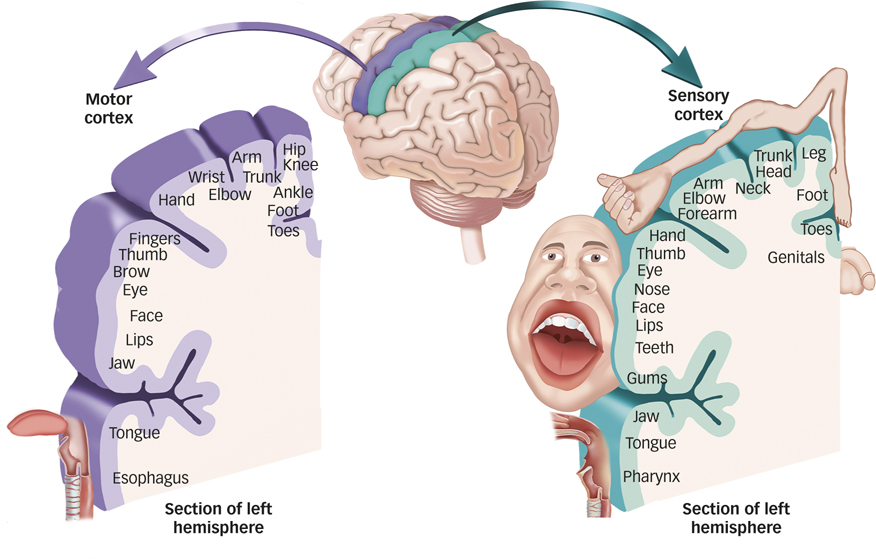
parietal lobe
A region of the cerebral cortex whose functions include processing information about touch.
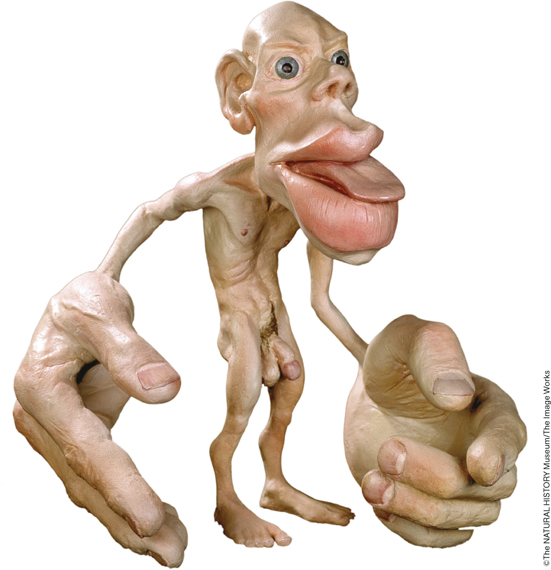
The temporal lobe, located on the lower side of each hemisphere, is responsible for hearing and language. The primary auditory cortex in the temporal lobe is analogous to the somatosensory cortex in the parietal lobe and the primary visual areas of the occipital lobe: It receives sensory information from the ears based on the frequencies of sounds (Recanzone & Sutter, 2008). Secondary areas of the temporal lobe then process the information into meaningful units, such as speech and words. The temporal lobe also houses the visual association areas that interpret the meaning of visual stimuli and help us recognize common objects in the environment (Martin, 2007).
temporal lobe
A region of the cerebral cortex responsible for hearing and language.
The frontal lobe, which sits behind the forehead, has specialized areas for movement, abstract thinking, planning, memory, and judgment. As you just read, it contains the motor cortex, which coordinates movements of muscle groups throughout the body. Other areas in the frontal lobe coordinate thought processes that help us manipulate information and retrieve memories, which we can use to plan our behaviors and interact socially with others. In short, the frontal cortex allows us to do the kind of thinking, imagining, planning, and anticipating that sets humans apart from most other species (Schoenemann, Sheenan, & Glotzer, 2005; Stuss & Benson, 1986; Suddendorf & Corballis, 2007).
frontal lobe
A region of the cerebral cortex that has specialized areas for movement, abstract thinking, planning, memory, and judgment.
74
What types of thinking occur in the frontal lobe?
3. Organization within Specific Lobes. The third level of organization in the cerebral cortex involves the representation of information within specific lobes in the cortex. There is a hierarchy of processing stages from primary areas that handle fine details of information all the way up to association areas, which are composed of neurons that help provide sense and meaning to information registered in the cortex. For example, neurons in the primary visual cortex are highly specialized: Some detect features of the environment that are in a horizontal orientation, others detect movement, and still others process information about human versus nonhuman forms. Secondary areas interpret the information extracted by these primary areas (shape, motion, etc.) to make sense of what’s being perceived—
association areas
Areas of the cerebral cortex that are composed of neurons that help provide sense and meaning to information registered in the cortex.
A striking example of this property of association areas comes from the discovery of mirror neurons. Mirror neurons are active when an animal performs a behavior, such as reaching for or manipulating an object, and they are also activated when another animal observes the first animal as it performs the same behavior. Mirror neurons are found in the frontal lobe (near the motor cortex) and in the parietal lobe (Rizzolatti & Craighero, 2004; Rizzolatti & Sinigaglia, 2012). Neuroimaging studies have shown that mirror neurons are active when people watch someone perform a behavior, such as grasping in midair, and seem to be related to recognizing the goal someone has in carrying out an action (Hamilton & Grafton, 2006, 2008; Iacoboni, 2009; Rizzolatti & Sinigaglia, 2012).
mirror neurons
Neurons that are active when an animal performs a behavior, such as reaching for or manipulating an object, and are also activated when another animal observes that animal performing the same behavior.
75
Finally, neurons in the association areas are usually less specialized and more flexible than neurons in the primary areas. As such, they can be shaped by learning and experience to do their job more effectively. This kind of shaping of neurons by environmental forces allows the brain flexibility, or plasticity, our next topic.
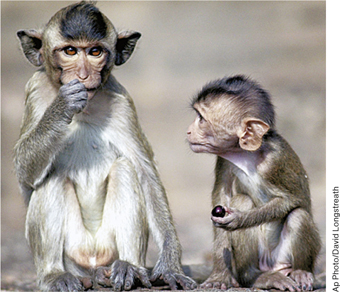
Brain Plasticity
What does it mean to say that the brain is plastic?
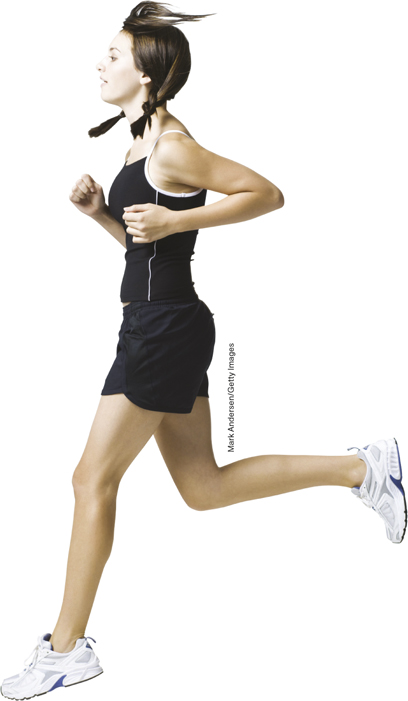
The cerebral cortex may seem like a fixed structure, one big sheet of neurons designed to help us make sense of our external world. Remarkably, though, sensory cortices are not fixed. They can adapt to changes in sensory inputs, a quality researchers call plasticity (i.e., the ability to be molded). As an example, if you lose your middle finger in an accident, the part of the somatosensory area that represents that finger is initially unresponsive (Kaas, 1991). After all, there’s no longer any sensory input coming from that location to that part of the brain. You might expect the left middle-
Plasticity doesn’t only occur to compensate for missing digits or limbs, however. An extraordinary amount of stimulation of one finger can result in that finger “taking over” the representation of the part of the cortex that usually represents other, adjacent fingers (Merzenich et al., 1990). For example, concert pianists have highly developed cortical areas for finger control: The continued input from the fingers commands a larger area of representation in the somatosensory cortices in the brain. Consistent with this observation, recent research indicates greater plasticity within the motor cortex of professional musicians compared with nonmusicians, perhaps reflecting an increase in the number of motor synapses as a result of extended practice (Rosenkranz, Williamon, & Rothwell, 2007).
Plasticity is also related to a question you might not expect to find in a psychology text: How much exercise have you been getting lately? A large number of studies in rats and other nonhuman animals indicates that physical exercise can increase the number of synapses and even promote the development of new neurons in the hippocampus (Hillman, Erickson, & Kramer, 2008; van Praag, 2009). Studies also document beneficial effects of cardiovascular exercise on aspects of brain function and cognitive performance (Colcombe et al., 2004, 2006). It should be clear by now that the plasticity of the brain is not just an interesting theoretical idea; it has potentially important applications to everyday life (Bryck & Fisher, 2012).
76
The Real World: Brain Plasticity and Sensations in Phantom Limbs
Brain Plasticity and Sensations in Phantom Limbs
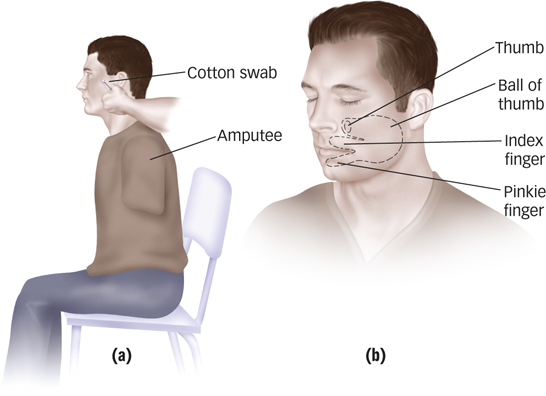
Long after a limb is amputated, many patients continue to experience sensations where the missing limb would be, a phenomenon called phantom limb syndrome. Some even report feeling pain in their phantom limbs. Why does this happen? Some evidence suggests that phantom limb syndrome may arise in part because of plasticity in the brain.
Researchers stimulated the skin surface in various regions around the face, torso, and arms while monitoring brain activity in amputees (Ramachandran & Blakeslee, 1998; Ramachandran, Brang, & McGeoch, 2010; Ramachandran, Rodgers-
Brain plasticity can explain these results (Pascual-
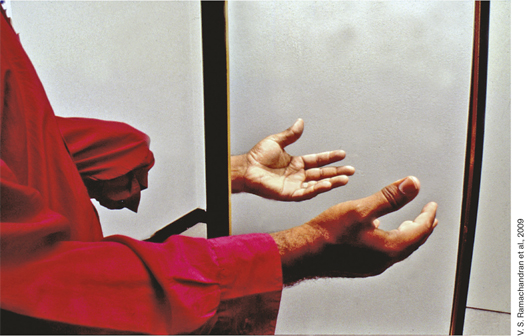
This idea has practical implications for dealing with the pain that can result from phantom limbs (Ramachandran & Altschuler, 2009). Researchers have used a “mirror box” to teach patients a new mapping to increase voluntary control over their phantom limbs. For example, a patient would place his intact right hand and phantom left hand in the mirror box such that when looking at the mirror, he sees his right hand reflected on the left—
77
SUMMARY QUIZ [3.4]
Question 3.9
| 1. | Which part of the hindbrain coordinates fine motor skills? |
- the medulla
- the cerebellum
- the pons
- the tegmentum
b.
Question 3.10
| 2. | What part of the brain is involved in movement and arousal? |
- the hindbrain
- the midbrain
- the forebrain
- the reticular formation
b.
Question 3.11
| 3. | The _____________ regulates body temperature, hunger, thirst, and sexual behavior. |
- cerebral cortex
- pituitary gland
- hypothalamus
- hippocampus
c.
Question 3.12
| 4. | What explains the apparent beneficial effects of cardiovascular exercise on aspects of brain function and cognitive performance? |
- the different sizes of the somatosensory cortices
- the position of the cerebral cortex
- specialization of association areas
- neuron plasticity
d.